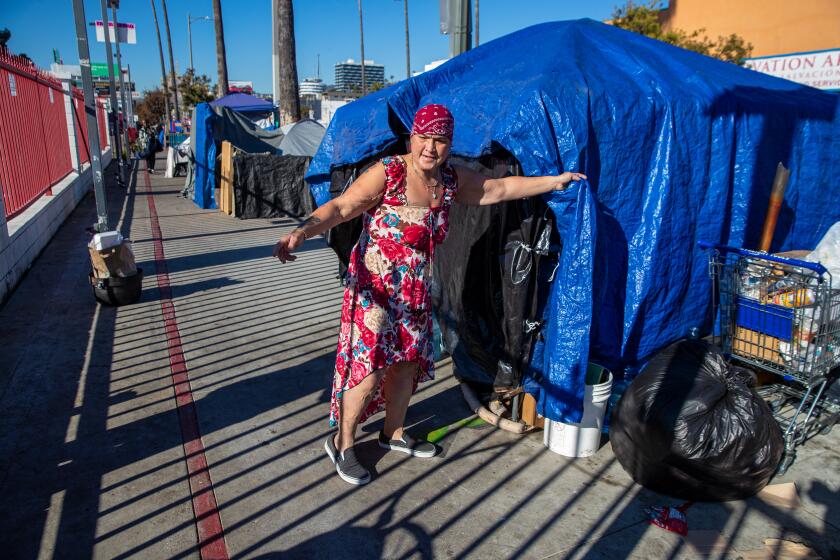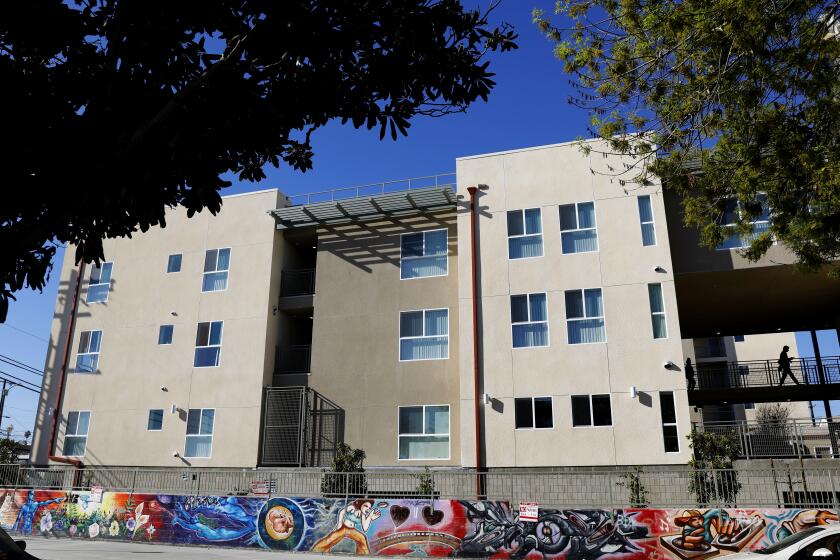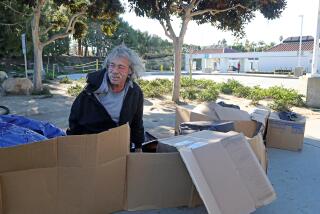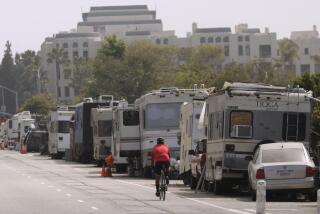Editorial: Is L.A.’s anti-camping law getting homeless people off sidewalks and into housing? Let’s find out

Nearly two years ago, the Los Angeles City Council passed a controversial ordinance that banned camping by homeless people near schools, day-care centers and parks as well as any other locations that council members wanted to decree off-limits. All they had to do was submit a resolution with a list of sites, provide some nominal reason for the ban and put it to a vote of the council, which almost always signed off. Signs would then be posted designating the areas off-limits.
As we said when the city passed the anti-camping law, dubbed 41.18 for the municipal code section, shooing people off a sidewalk does not solve homelessness. All it does is move people to another sidewalk. And remember that about 42,000 homeless people were counted in the city in the official 2022 point-in-time count.
In tandem with the anti-camping law, the City Council adopted a street engagement strategy whereby people would be told to leave an area only after they had been offered some kind of temporary housing, which could range from a bed in a group shelter to a motel room.
If Bass and her staff can keep up this pace and speed up permanent housing projects, then the city could see a transformation on the streets.
Last week council President Paul Krekorian added five more sites to the roster of 41.18 locations and new Westside Council District 11 representative Traci Park added a dozen locations. They were all approved but without the support of four council members — Nithya Raman and Marqueece Harris-Dawson and newly elected members Katy Yaroslavsky and Hugo Soto-Martinez.
Yaroslavsky, who represents Council District 5, went further and smartly proposed that the city analyze what the anti-camping law has accomplished. Among her questions: What kind of housing — temporary or permanent — have people been offered? Do people accept? How many people are still housed today? What are their demographics (race, gender, mental illness or substance-use issues)? And how many citations have been issued by the L.A. Police Department if people refuse to leave a designated area?
These are all questions worth asking (even though some may be difficult to answer), and good for Yaroslavsky for insisting the council look at whether the ban and street engagement strategy are getting people into housing that they’re staying in.
Another question: How many sites are covered by the camping ban? Last May, there were more than 100 locations with posted anti-camping signs, according to a Times report. Yaroslavsky says there are an estimated 2,000 sites, including those near every school and day-care facility in the city. And in many locations, people continue to camp.
City officials said that only two citations had been issued for refusing to leave a no-camping site during the first four months of 2022. (Frankly, there shouldn’t be any citations issued. The last thing that a homeless person needs is a citation that he or she cannot pay.)
A new directive by Mayor Karen Bass orders city agencies to work simultaneously to approve plans for homeless housing projects. Will it work to get people housed quicker? It looks promising, but we will be watching.
As Yaroslavsky points out, there aren’t enough police to patrol every no-camping site. Nor should that be what the law is about. The only way to make the law and the street strategy effective is to have a credible offer of housing, said Yaroslavsky, who took office in December after former Councilmember Paul Koretz was termed out.
In the San Fernando Valley district where Krekorian just added more no-camping sites, everyone is offered either a shelter bed or a place in a “tiny home” village. But no one has been arrested or cited for refusing to move, according to an aide in Krekorian’s office.
More promising is Mayor Karen Bass’ Inside Safe initiative, which goes encampment by encampment offering people temporary motel or hotel rooms followed by permanent housing. Bass has said that none of the encampment moves will be coerced and that no one will be cited or jailed for refusing to leave. In the two months since Bass launched Inside Safe, 356 people from nine encampment sites have been housed. About 20 have gotten permanent housing, according to Va Lecia Adams Kellum, the incoming chief executive of the L.A. Homeless Services Authority, who worked with Bass to launch Inside Safe.
Los Angeles now has about two years of experience to demonstrate whether the anti-camping law and street strategy are getting people off sidewalks and into housing. It’s right to pause and take stock.
More to Read
A cure for the common opinion
Get thought-provoking perspectives with our weekly newsletter.
You may occasionally receive promotional content from the Los Angeles Times.












